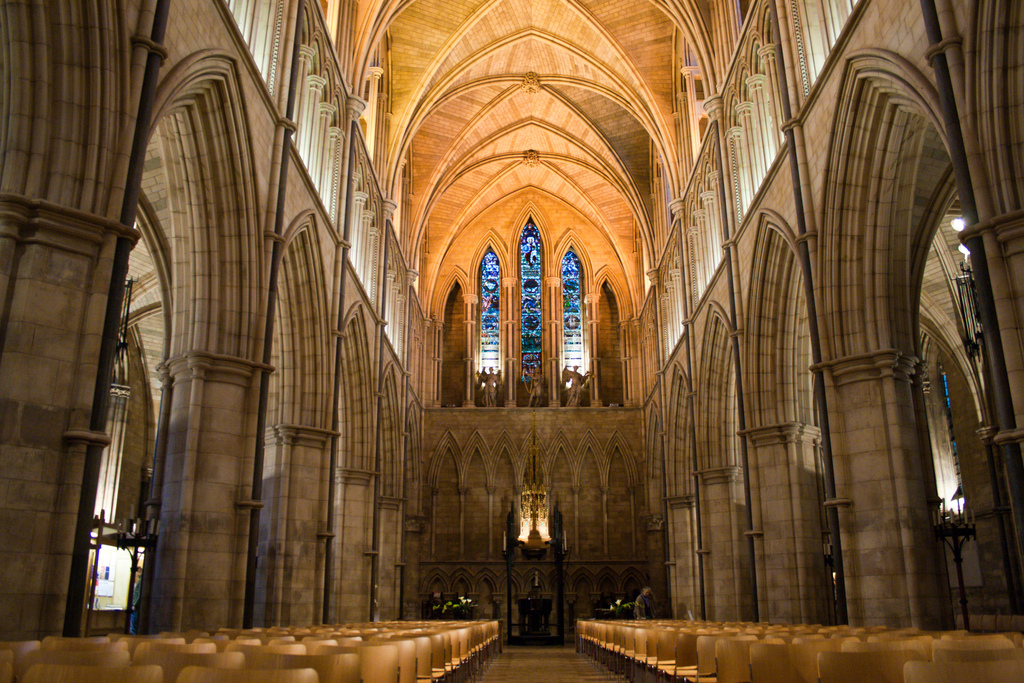Genius of the Northern Renaissance – Albrecht Dürer
Article By Tim Leahy
 If you were asked to name an artist of the Renaissance who was a superb painter, draughtsman, and skilled in science and mathematics, you would most likely think of Leonardo da Vinci. But there were others, and foremost among them was a German artist named Albrecht Dürer. Dürer was the leading artist of what is now called the ‘Northern Renaissance’, meaning north of the Alps, as distinct from the Italian Renaissance, south of the Alps.
If you were asked to name an artist of the Renaissance who was a superb painter, draughtsman, and skilled in science and mathematics, you would most likely think of Leonardo da Vinci. But there were others, and foremost among them was a German artist named Albrecht Dürer. Dürer was the leading artist of what is now called the ‘Northern Renaissance’, meaning north of the Alps, as distinct from the Italian Renaissance, south of the Alps.
Dürer was born in 1471 in Nuremberg, Germany, at a time when Germany was part of the Holy Roman Empire. As a young teenager he was trained initially in metal craft and drawing, under his father, a well known goldsmith. However, his precocious talent in drawing brought about his apprenticeship to the leading artist in Nuremberg. After graduating, Dürer spent a number of years travelling and learning his trade in artists workshops in cities throughout northern Europe. In 1494, at the age of 23 he made his first of two trips across the Alps to Venice, Italy, one of the leading centres of art at that time. Dürer learnt much about Italian Renaissance art during his trip, and was hugely influenced by it. On his return to Nuremberg, he opened his own art workshop. As well as an artist, he proved to be a skilled businessman, and his art came to the attention of Maximilian I, the Holy Roman Emperor, who became Dürer’s leading patron. During the Renaissance, most artists made a living from wealthy patrons, such as clergy and political leaders, who commissioned them to create art. Those artworks often hung on walls in private residences, and were only seen by a privileged few.
Dürer’s workshop was most successful in making high quality ‘woodcut’ prints. Woodcut printing dates as far back as 7th century China. The image to be printed is incised or cut into a wooden block. Ink is applied, and the block is pressed onto the paper to transfer the image. Hundreds of copies could be printed in this way. Prints were cheaper to make and sell, easy to transport, and multiple copies of the same original artwork could be made. A new interest in collecting and appreciating printed artwork was created, especially among the prosperous middle classes in Europe. Making and selling prints proved a reliable source of income for Dürer. The superb quality and detail of his woodcut prints made him a famous public celebrity across Europe, in a way that had never been achieved by an artist before. Some have called Dürer ‘the Andy Warhol of the Renaissance’. Dürer signed almost all his works with a unique monogram of his initials, in the form of a capital letter A containing inside it the capital letter D. He was one of the first artists to ‘brand’ or identify his work in this way.
Dürer’s work was wide-ranging, including portraits, self-portraits, drawings, altarpiece paintings, prints and books.
Self-portraits
Dürer painted a series of self-portraits during his twenties, the most famous of which is called “Self Portrait at Age 28”. In this painting, he portrays himself in a classic image of Jesus Christ, looking directly at the viewer, right hand conveying a blessing. As a Christian, Dürer may have wanted to convey that his skills were God given. He may also have wanted to portray himself as a confident and successful artist.
Drawings
One of his most famous works is a simple pen and ink sketch called “Praying Hands”. The image drawn is the hands of an apostle in prayer, made in preparation for a large oil painting or altarpiece, to be displayed behind a church altar. The altarpiece was subsequently destroyed by fire, but the Praying Hands sketch survived, and became famous as an international symbol of piety.
Altarpiece Paintings
An altarpiece is a set of artworks, usually large format paintings, displayed on the wall behind the altar in a Christian church. Dürer completed a number of such commissions, one of which was named the ‘Adoration of the Magi’, for All Saints’ Church in Wittenberg, Germany, completed in 1505. Dürer styled the painting as a combination of northern naturalism with Italian use of perspective, ideal proportions and colour.
Prints
Dürer became famous mainly because of the high quality of his woodcut prints. In 1498 he produced a series of prints called the Apocalypse, depicting scenes from the Bible’s Book of Revelations. The most famous of these is ‘The Four Horsemen of the Apocalypse’, the four riders representing Death, Famine, War and Plague. A biblical prophecy foretelling that the end of the world would occur in the year 1500 was widely believed by Christians at the time. The Apocalypse print series proved to be hugely successful for Dürer.
Books
Dürer wrote a number of books on theoretical subjects ranging from geometry, perspective drawing, human proportions, and aesthetics. Much of his learnings in these areas were acquired on his visits to Italy. He did not invent novel ideas, as such, but instead brought a scientific discipline to the subjects he wrote about.
What inspired Albrecht Dürer to create such a vast ‘oeuvre’, or body of artistic work?
Many Renaissance artists took inspiration from the divine, from God. Dürer wrote:
“Why has God given me such magnificent talent? It is a curse as well as a great blessing”.
His self portrait in the image of Jesus Christ is perhaps an example of such inspiration.
Dürer may have been inspired by Humanism, as he was known to be a follower. Humanism at the time of the Renaissance meant the revival of the study of Greco-Roman classical antiquity, bypassing the Middle Ages. Areas studied included grammar, rhetoric, history, poetry, and moral philosophy, subjects that may have influenced his art. Dürer may have been driven by the spirit of competition with artists of the Italian Renaissance, in particular with Leonardo da Vinci. While in Venice, Dürer corresponded by letters with da Vinci, and had seen some of his work. Dürer also wrote books on theoretical subjects, as did da Vinci.
Albrecht Dürer died in 1528, aged 56. His legacy is vast, not just in terms of the volume of paintings, drawings and prints that survive in museums and private collections today. Dürer was perhaps the first European artist entrepreneur, a master of self promotion and branding, before brands were even known. His monogram, like a trademark, became familiar across Europe. In doing so, Dürer brought artistic beauty and realism to a much wider audience. The quality of Dürer’s paintings, prints and drawings were an inspiration to other artists across much of Europe, even in Renaissance Italy. However, many aspiring Dürers found that they were unable to achieve the quality and detail of the master himself. His time spent in Italy enabled Dürer to bring the classical artistic motifs of the Italian Renaissance to Northern art. These motifs included perspective, ideal proportions, and geometry. In turn, his work, especially his prints, influenced Italian art for many years after his death.
Whatever his inspiration, Dürer left a legacy that has influenced European art down through the centuries. He truly was the genius of the Northern Renaissance!
Image Credits: Livre de Manuel Jover Le Christ dans l'Art, Monaco : Éditions Sauret 1994 | wikimedia commons | CC BY PD
The entity posting this article assumes the responsibility that images used in this article have the requisite permissionsImage References
Livre de Manuel Jover Le Christ dans l'Art, Monaco : Éditions Sauret 1994 |Wwkimedia Commons | CC BY PD




What do you think?